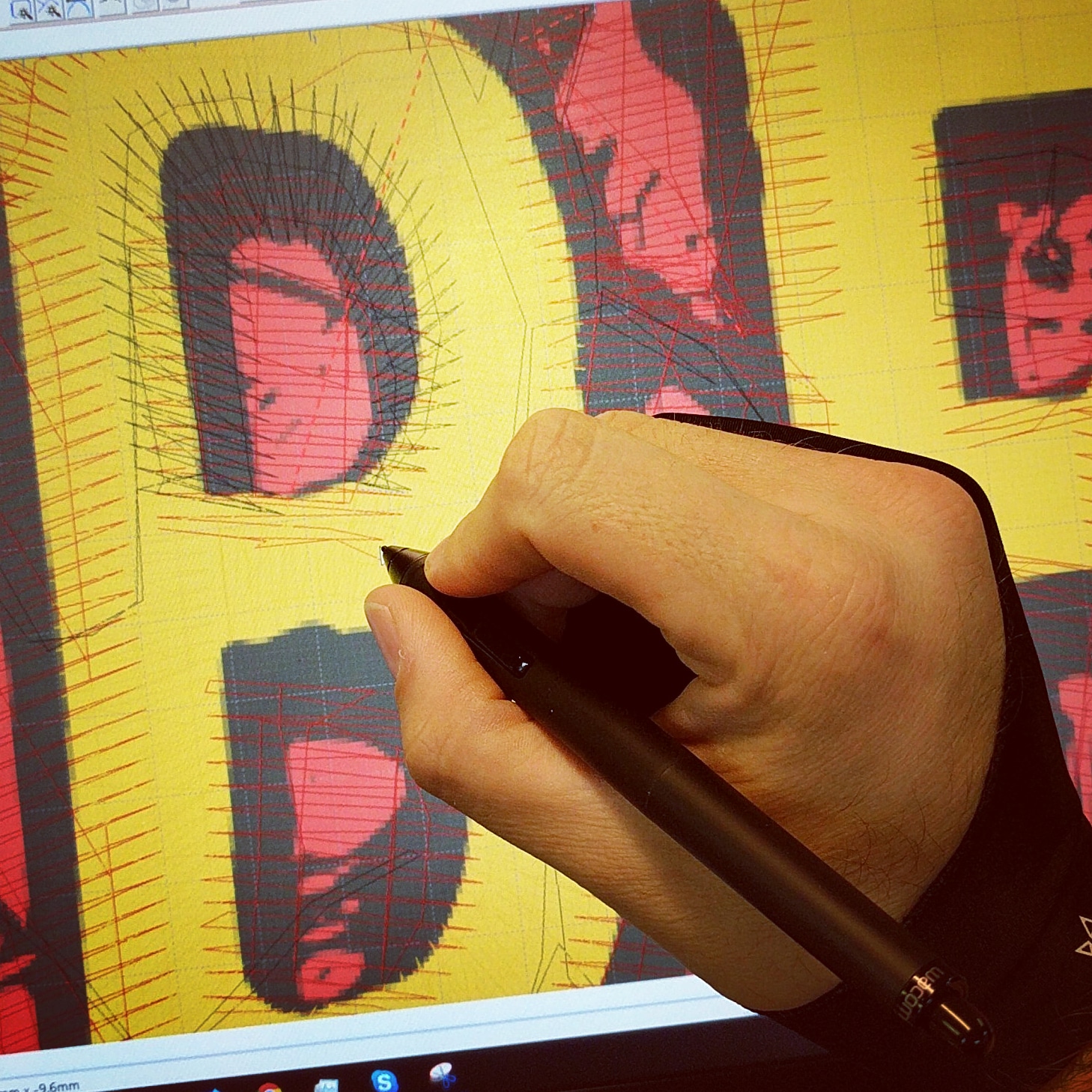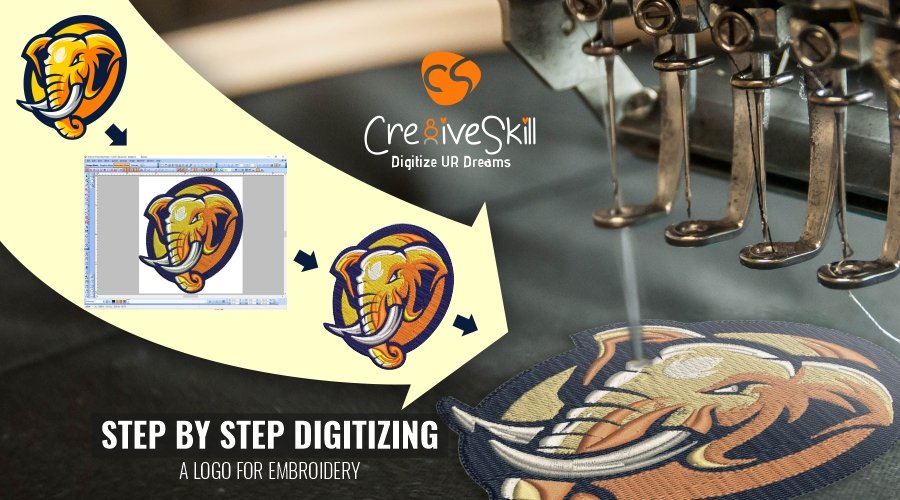Reliable Digitizing for Embroidery: Quick Turn-around
Wiki Article
Understanding the Embroidery Digitizing Refine: Your Ultimate Overview
Embroidery digitizing is a thorough craft that needs precision and know-how to translate detailed layouts into electronic formats for machine needlework. As artisans begin on this journey to grasp the needlework digitizing process, a thorough understanding of the fundamentals establishes the foundation for quality. However, beyond the rudimentary expertise lies a world of advanced software application, specialized tools, and nuanced strategies waiting to be discovered. By diving into the subtleties of digitizing, one can unlock a globe of creative opportunities and raise their embroidery projects to new elevations.
Comprehending Needlework Digitizing Fundamentals
Needlework digitizing essentials create the structure whereupon detailed designs are translated into machine-readable styles for exact stitching. This preliminary action in the embroidery digitizing procedure is crucial for ensuring that the last stitched product is a faithful depiction of the original design. Recognizing needlework digitizing basics entails understanding vital concepts such as stitch types, stitch instructions, density, rug, and pull settlement.Stitch kinds play a crucial role in determining the visual and textural result of the embroidered design. By selecting the ideal stitch kind, whether it be satin, fill, or running stitch, digitizers can accomplish the desired result and improve the total quality of the embroidery. Additionally, stitch instructions affects the circulation and measurement of the design, while density establishes the spacing and insurance coverage of the stitches.
Moreover, underlay sewing gives security to the layout by protecting the textile and protecting against distortion during the embroidery procedure. Pull compensation is one more important factor to consider to counteract the all-natural tendency of fabric to contract when sewn. Mastering these needlework digitizing essentials is essential for developing professional-quality stitched products.
Choosing the Right Digitizing Software
Choosing the appropriate digitizing software is a critical choice that dramatically affects the effectiveness and high quality of the needlework digitizing process. Digitizing for Embroidery. When selecting the right digitizing software, it is important to take into consideration aspects such as the intricacy of layouts you intend to create, the user-friendliness of the software, the level of consumer support used, and the compatibility with your needlework equipmentThere are numerous digitizing software choices offered in the marketplace, ranging from basic programs for beginners to advanced software for specialist digitizers. Some prominent options consist of Wilcom EmbroideryStudio, Hatch Embroidery Software, and PulseID. These software application bundles offer a large range of click reference tools and attributes to aid you create intricate layouts with ease.
Before making a decision, it is recommended to explore the different software choices through complimentary tests or demonstrations to establish which one ideal matches your requirements. Furthermore, checking out evaluations and seeking recommendations from skilled digitizers can offer important insights into the strengths and weaknesses of each software (Digitizing for Embroidery). By thoroughly reviewing your requirements and contrasting the attributes of various digitizing software application, you can make an informed option that improves your needlework digitizing process
Digitizing Tools and Techniques

Optimizing Style Setup for Embroidery
Understanding the ins and outs of layout settings is essential in attaining optimal lead to the needlework digitizing procedure, building upon the structure laid by recognizing digitizing tools and strategies. When optimizing style settings for needlework, it is vital to think about variables such as stitch type, thickness, underlay, pull payment, and Recommended Reading enrollment. Sew type option influences the overall feel and look of the layout, with alternatives like satin, fill, and running stitches offering different textures and effects. Density refers to the spacing and density of stitches, impacting the layout's protection and sturdiness. Appropriate underlay sewing provides stability and protects against textile distortion, especially for complex designs or on elastic materials. Draw compensation changes for fabric stretch throughout stitching, making certain precise design duplication. Registration setups line up various components of the layout accurately, keeping overall layout integrity. By fine-tuning these layout setups, embroiderers can boost the high quality and accuracy read this post here of their embroidered productions.
Troubleshooting Common Digitizing Issues
When experiencing usual digitizing issues during the needlework process, it is vital to understand the origin causes and carry out reliable services immediately. One common issue is stitch thickness concerns, where stitches may be as well thick, causing the material to tighten, or too sporadic, bring about gaps in the design. Adjusting the stitch thickness setups in the digitizing software application can aid resolve this problem.One more constant challenge is string breaks throughout the needlework process. This can happen due to numerous factors such as incorrect stress settings, plain needles, or utilizing low-grade thread. Making sure correct maintenance of the embroidery maker, consisting of regular needle modifications and stress changes, can decrease the occurrence of string breaks.
Furthermore, style registration errors can result in misaligned components within the embroidery design. Inspecting the layout placement in the digitizing software application and making required changes before sewing can aid in avoiding this problem. By attending to these typical digitizing problems immediately and successfully, you can make sure a smoother needlework process and top notch completed products.
Conclusion
To conclude, mastering the embroidery digitizing procedure calls for a solid understanding of the fundamentals, the right selection of software program, and expertise of devices and strategies. Optimizing design setups and fixing typical digitizing issues are crucial action in making sure top notch embroidery results. By complying with these actions carefully, one can achieve accuracy and effectiveness in the digitizing process.Report this wiki page